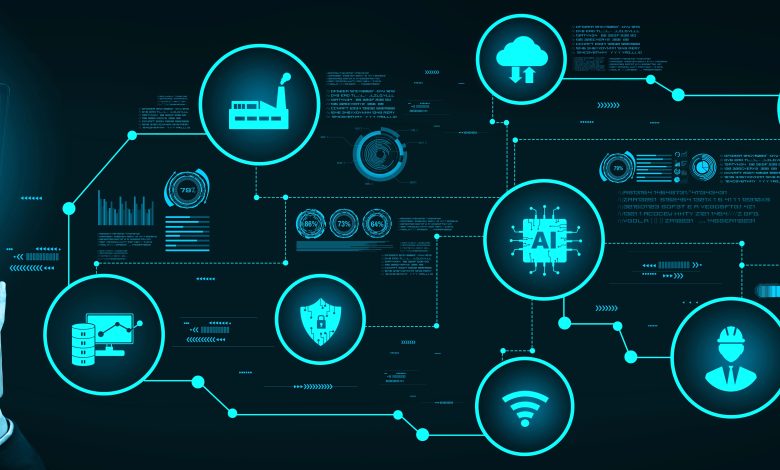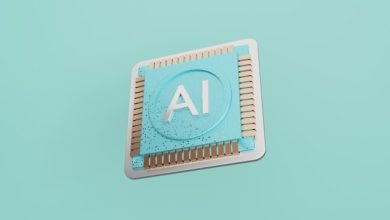
Today’s manufacturing companies have become high-tech organizations, and AI is rapidly accelerating this transformation and creating new opportunities. Not only is AI changing how factories and operations are run, but it’s also redefining job roles and the kind of manufacturing talent these organizations need. This is especially important to understand as this industry also grapples with an ongoing skills shortage that’s exacerbated as seasoned workers retire.
Organizations need to attract new talent, but this can be easier said than done. Part of it is a branding issue; perhaps not enough people understand the reality of how AI and other technologies are creating new and exciting job opportunities for the digital-savvy generation and beyond. It’s time to change that.
The talent gap – moving from crisis to new opportunity
The U.S. manufacturing industry could require as many as 3.8 million jobs to be filled within the next decade, according to a study by the Manufacturing Institute and Deloitte. In fact, 65% of manufacturers polled for the study said attracting and retaining talent is their primary business challenge.
Manufacturers need employees, and unemployment rates are high – a shift is needed to match these two needs. The manufacturing industry offers numerous opportunities, but part of the challenge lies in perception. Many young people don’t see manufacturing as a compelling or high-tech career path. The industry needs fresh talent but hasn’t evolved its image fast enough to appeal to digital-native generations.
Younger generations tend to think differently about work and tech. AI and other emerging technologies can play a key role in meeting these employees where they’re at. AI reduces barriers; you don’t necessarily have to be technical to execute technical ideas, as we’re seeing with the advent of concepts like vibe coding.
How AI is transforming manufacturing jobs
AI is empowering manufacturers to move from legacy systems to intelligent interfaces. While many traditional systems like SAP were basic point-and-click operations, generative AI and its ilk are changing this. User interfaces are becoming better; they work more smoothly. It’s enabling things like voice commands and new ways of executing operational commands.
AI provides a great cushion in the user interface by allowing flexibility around human error by inferring intent. For example, you previously had to create user interfaces based on the workflow that was imagined by the software’s creator. Instead of interacting with point and click or typing, you can upload photos, videos, sound clips, documents and more, and use AI to analyze and extract the content in any order we want. It’s really empowering users to drive the interaction with the computer rather than the computer being the entity dictating how we work.
AI also enables “vibe coding.” AI enables business users to “code” or configure without needing to know how to code. In terms of how this is impacting the configuration space specifically, AI is simplifying how products are configured, as well as how configuration rules are documented.
As we move forward, this technology will further enable better ways to do configuration. For instance, if you decided on a new product and the changes and rules you wanted to implement, you could make a recording or transcription of that call, press a button and have the AI-driven solution spit out your configuration rules.
This frees up employees from the rote, manual work of having to type things up, which gives them more time to spend on higher-value work. For instance, they will have more time to understand customer needs, market needs, the results of certain configurations and smarter analysis of results. It’s really about having more time to think about and understand the problem as well as figuring out how to execute it in the rest of the organization.
Ultimately, it’s about reducing technical friction to allow for more innovation and autonomy. AI is not just replacing jobs; it’s helping the industry rethink roles entirely. Think of it as the “return of the secretary,” but now it’s your AI assistant taking meeting notes and acting on them. Each wave of innovation eliminates one layer of friction between idea and execution.
Rethinking the narrative – showcasing manufacturing as a high-tech, creative industry
To encourage a new generation of workers to embrace manufacturing, the industry must move from perception to reality, and its leaders must demonstrate how AI and other technologies are creating exciting opportunities. They need to show why today’s manufacturing jobs are exciting and present growth opportunities. Young people want impact, autonomy and creative tools; AI gives them that, including in manufacturing. Manufacturing leaders should seize this opportunity and use it as a lever for attracting new talent.
Many companies are already starting to use these technologies to create new opportunities within new and existing job roles. Schneider Electric, for instance, introduced a citizen development program a few years back to empower employees with new AI-based tools and greater autonomy. The result? Improved productivity, faster innovation and greater business impact. Honeywell has incorporated technologies like augmented reality (AR) and virtual reality (VR) into its industrial training program, creating simulated real-life factory scenarios presented in a way that connects with younger generations’ learning style. This is a great example of showing how manufacturing isn’t just technical; it can be immersive and interactive. Bosch is another company leveraging AR as part of its training and operations, among others.
Communicate the AI manufacturing opportunity
Every generation expects faster, simpler and smarter ways to work, and with AI, we finally have the ability to put this into practice. The challenge now isn’t just building the future of manufacturing — it’s inviting the next generation to help shape it. Rather than AI taking jobs away, it’s creating the need for employees with the right skills to empower manufacturing to endure and advance. Today’s manufacturing operations are high-tech and offer all sorts of career paths for younger people and those looking to change course. Now it’s time for the industry to really shout this from the rooftops.





